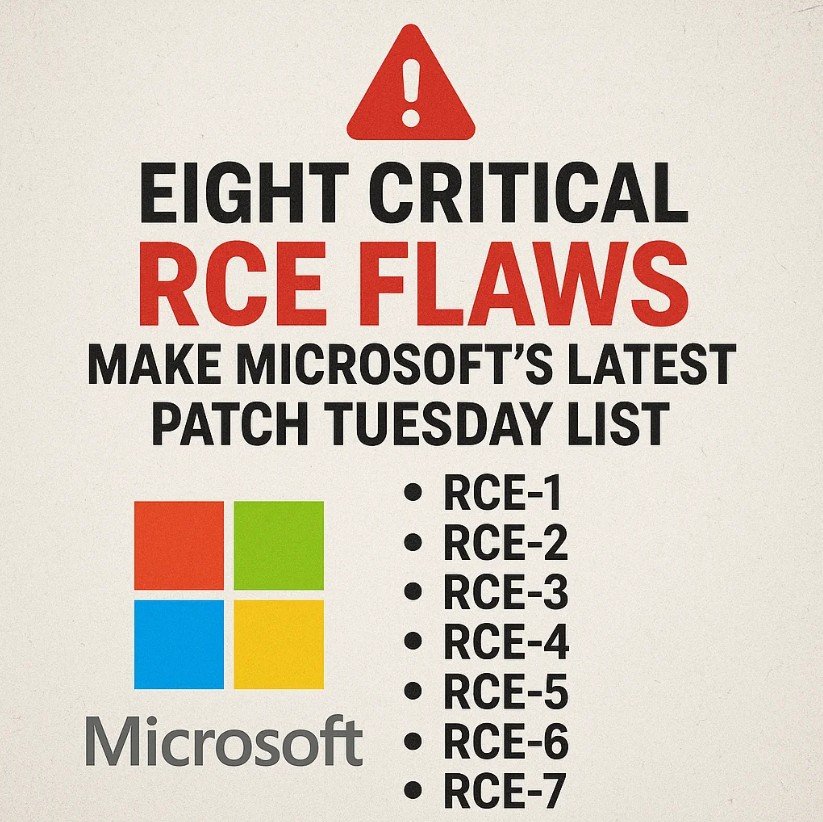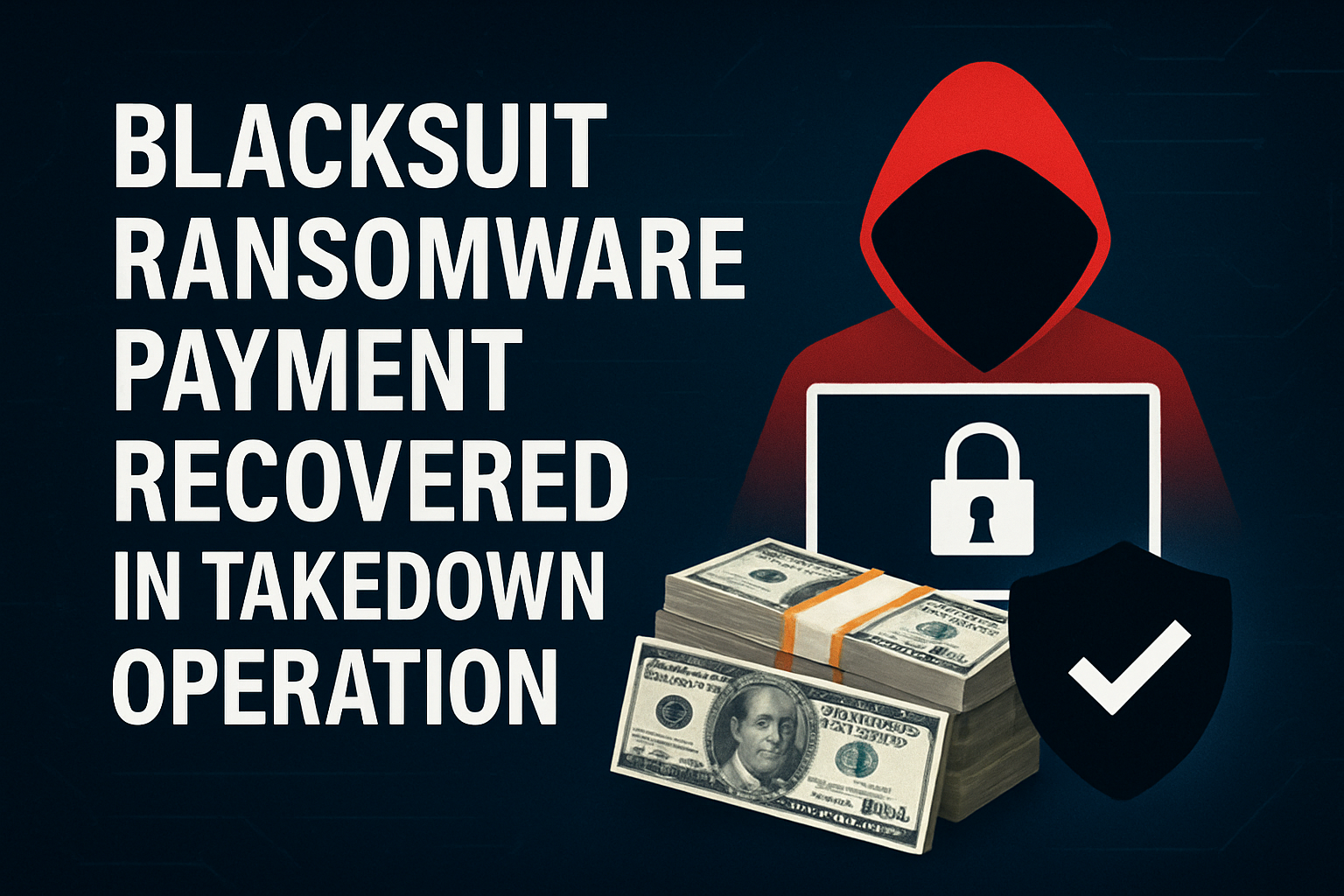Introduction
August’s Patch Tuesday from Microsoft is not a routine maintenance drop. It is a broad risk-reduction opportunity that touches the systems your staff use daily and the infrastructure that keeps your business running. More than one hundred vulnerabilities received fixes across Windows, Office, Hyper-V, graphics components, messaging services, and platforms that sit close to Azure. Eight of those issues are rated Critical because they enable remote code execution. Several others allow elevation of privilege, information disclosure, or spoofing.
One Kerberos weakness has been publicly discussed, which increases the odds that capable attackers can weaponize it quickly even if there is no confirmed exploitation at release time. This article breaks down the update in plain language and turns it into an action plan. It explains where the real risk lives, how attackers chain bugs together, and what defenders can do in the first few days after patch release to limit exposure while rolling out updates safely.
Executive Summary For Busy Leaders
- Scale of the drop: more than one hundred fixes across core Windows components, productivity apps, virtualization, and cloud-adjacent services.
- Highest risk items: eight Critical remote code execution paths that map to everyday workflows such as opening documents, rendering images, handling message queue traffic, and operating virtual machines.
- Identity component exposure: an elevation of privilege issue in NTLM and a publicly discussed Kerberos path increase the chance of rapid escalation after an initial foothold.
- Virtualization boundaries: Hyper-V receives attention for spoofing and other issues that could undermine isolation and reliability.
- Practical takeaway: treat August as a coordinated risk-reduction sprint. Prioritize user-facing components and identity layers first, then stabilize virtualization hosts and Azure-adjacent services in the same change window.
Why This Month Matters Beyond Routine Patching
Attackers do not need a single spectacular bug when they can chain two or three good ones. User-facing entry points such as Office files and graphics rendering offer low-friction initial access. Identity components such as NTLM and Kerberos help turn a single compromised user into administrator rights. Virtualization and cloud-adjacent systems can turn local compromise into service-wide disruption. When multiple categories receive fixes at once, defenders have a rare chance to break common attacker playbooks in a single coordinated push.
What Changed: A Human-Readable Rundown
Remote Code Execution In Everyday Components
Remote code execution is exactly what it sounds like. If preconditions are met, an attacker can run their code on a target system without logging in. That capability is a favorite for initial access because it shifts control to the attacker early and quietly. The August release includes remote code execution paths in Office and Word, the DirectX Graphics Kernel and GDI Plus, Microsoft Message Queuing, and Hyper-V.
In practical terms, that means malicious documents, crafted images, network messages that reach listening queues, or operations inside a guest can trigger execution. Because these are components that users and admins touch constantly, the exposure surface is wide. A salesperson opens a document. A designer previews an image. A service listens on a message queue that was enabled months ago for testing and never closed. Each of these is a realistic path to a foothold.
NTLM Elevation Of Privilege: The Persistent Legacy
Many organizations plan to phase NTLM out, yet it remains present in mixed estates for printers, legacy applications, and cross-domain access. An elevation of privilege path inside NTLM matters because it helps an attacker move from local rights to powerful privileges quickly after landing on a single machine. Combine one of the remote code execution issues with NTLM privilege escalation and the journey from a compromised laptop to a server is not a long one. That is why identity hardening belongs in the same change window as patch deployment.
Kerberos Weakness With Public Detail
A Kerberos elevation of privilege scenario has been publicly discussed. Even without confirmed exploitation, public technical detail shifts the defender’s calculus. It lowers the barrier for competent adversaries to reproduce a working exploit. Directory services are bread-and-butter targets for ransomware crews and hands-on-keyboard actors. Patch quickly, and where feasible, increase monitoring around ticket issuance and unusual authentication patterns until your estate is fully updated.
Hyper-V And Azure-Adjacent Issues
Virtualization layers concentrate risk because they host many workloads and are often treated as stable, do-not-touch systems. A spoofing weakness or an input path that can lead to code execution undermines the assumption that guests and hosts are neatly separated. If you run dense virtualization clusters or cloud-connected services that depend on Hyper-V components, schedule these updates with the same urgency as user-facing fixes. Reliability and isolation both benefit.
Real-World Attack Paths You Should Model
- Malicious document to domain admin: a user opens a tainted Office file that triggers code execution. The attacker harvests cached credentials, then abuses the NTLM elevation path to gain local system rights. From there they move laterally to a file server, dump additional credentials, and begin staging ransomware.
- Image rendering to persistent access: a crafted image hits a graphics rendering edge case during preview. The attacker plants a scheduled task, disables key logging, and waits for a helpdesk technician to connect. Credential theft follows, and the Kerberos path gives them elevated tokens.
- Message queue to service compromise: Microsoft Message Queuing listens on a forgotten port. An external system sends a crafted message that triggers execution inside a service account context. The actor pivots to application servers that trust that account.
- Hyper-V boundary stress: a guest triggers a sequence that results in spoofing or code execution affecting the host or sibling guests. Even partial success can cause downtime that amplifies into an incident.
A Prioritized Patch Plan You Can Run Now
- Inventory the blast radius: identify machines that can open Office files from external sources, endpoints with graphics-heavy workloads, servers with Microsoft Message Queuing enabled, domain controllers, and Hyper-V hosts. A short, current inventory lowers rollout friction.
- Ship user-facing fixes first: patch Office and the graphics stack on high-risk endpoints such as laptops used by sales, finance, executive assistants, and design. These are the accounts most likely to handle files from outside parties.
- Close identity gaps next: update domain controllers and tier-0 identity systems. While updates roll, enable or tighten controls that limit NTLM usage, apply stricter policies for service accounts, and review recent changes to delegation or constrained delegation.
Detection And Monitoring To Run In Parallel
- Track authentication anomalies: repeated failures, ticket anomalies, and access outside of normal time windows. Identity attacks leave patterns.
- Monitor MSMQ endpoints for spikes or malformed messages if the service must remain enabled during rollout.
- Observe Hyper-V hosts for guest restarts, unexpected state changes, and management operations issued outside maintenance windows.
Communication That Builds Trust
- Set expectations early: tell executives what is being patched, why identity and virtualization are part of the same change, and what brief interruptions may occur.
- Give users practical guidance: advise extra caution with unsolicited documents and images during the rollout window. Offer a simple channel to report suspicious files.
- Close the loop: share a short after-action note with what was updated, what went smoothly, and any known issues with workarounds. Transparency reduces friction next month.
Frequently Asked Questions
Is every endpoint at equal risk this month
No. Laptops and desktops that routinely open files from clients or the internet carry higher initial-access risk because the Critical paths include Office and graphics rendering. Domain controllers and servers become high priority immediately after that because identity escalation turns small compromises into big ones.
Do we need to patch Hyper-V if our guests are stable
Yes. Stability is not the same as security. Spoofing or boundary weaknesses can be exploited without visible guest instability. Hosts also concentrate many business services, so the impact of a compromise is amplified.
Can network filters and email gateways solve the document problem
Filtering helps but should not be treated as a replacement for patching. Attackers iterate quickly. Patching removes the underlying execution path rather than trying to catch every malicious file at the edge.
Metrics That Demonstrate Progress
- Percentage of user endpoints with Office and graphics updates applied within the first seventy-two hours.
- Percentage of domain controllers and identity-tier systems patched within one maintenance cycle.
- Number of MSMQ listeners reduced or locked behind strict firewall rules.
- Hyper-V host coverage: fraction of hosts updated and restarted with health checks completed.
- Detections observed during rollout: count of blocked macro attempts, suspicious child processes from Office, and authentication anomalies investigated.
Conclusion
August’s Patch Tuesday gives defenders a chance to break common attacker chains in a single coordinated effort. The highest impact moves are straightforward. Patch the components your people touch every day. Patch the identity layer that attackers reliably abuse to escalate. Patch the virtualization layer that concentrates critical workloads. While updates roll out, apply compensating controls that reduce document risk, limit legacy authentication, and keep a close eye on unusual execution and authentication activity. With a focused plan, you convert a long list of CVEs into a measurable reduction in business risk and a smoother path into next month’s cycle.









